House planning and decoration in various styles
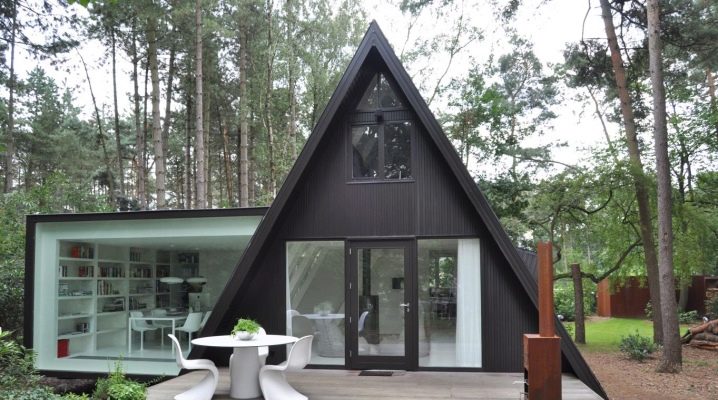
There are many approaches to home decoration. Designers and architects are constantly creating new projects that meet one or another customer's request. For someone, the priority is the original and innovative design, which, as a rule, implies extra financial costs. For some, practicality and convenience at a reasonable price. The main thing is that the built house should suit its residents, satisfy their needs. In this case, he will certainly become the best for them.
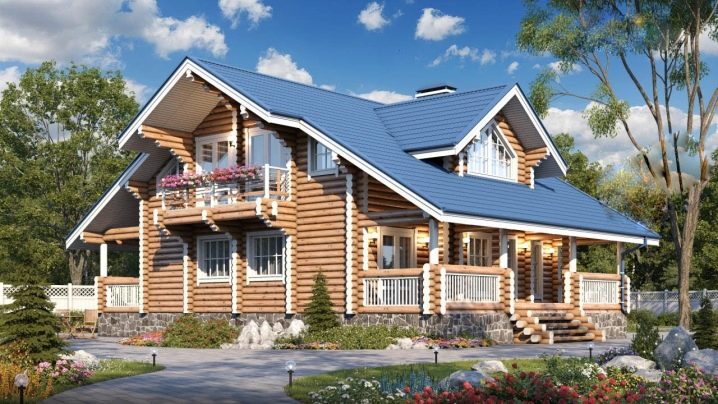
How to choose a project: important nuances
In order to correctly approach the choice of a cottage project, it is worth considering several points at once:
- Its location on the site. It is important to keep in mind the characteristics of the soil, the angle of the slope, if any.
- Total area and layout. These parameters must necessarily meet building codes, along with the wishes of the residents of the future home.
- Features of the materials from which the walls and roof will be made, as well as features of the style in which the construction of the cottage will be sustained.
- Materials and diagrams that will be required for the construction of sewerage, electrical wiring, water supply.
- To simplify the preliminary stage, you can take an already finished project as a basis, adjusting minor details.
- During the planning of the project, it is important to consult experts, otherwise difficulties may arise already during the construction process.
- The more painstakingly the project of the house is developed, the more time is spent on it, the faster the construction will progress in the future.
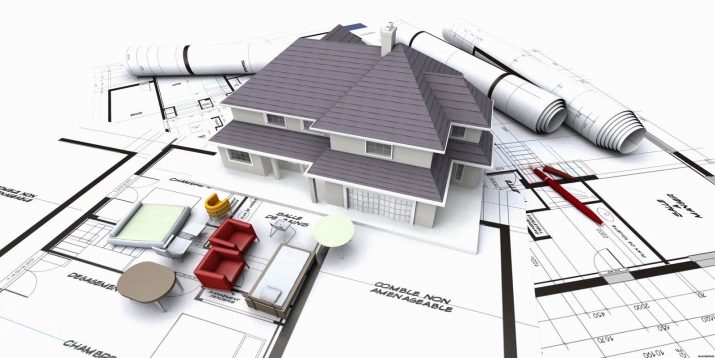
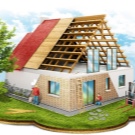
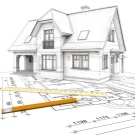
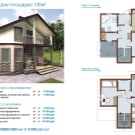

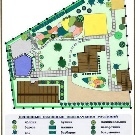
Features of the site
Before developing a project, you must first decide on the site on which the house will be built, note all its features. This is a very important point, since it is he who is responsible for how quickly and easily it is possible to carry out communications on the site, what foundation the house will need.
At the beginning, it is worth noting on which side it is planned to put the house and on which side there will be an entrance to it. It is better that the entrance to the house and the rooms in which people most often gather are on the sunny side.
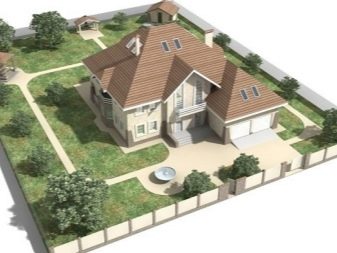


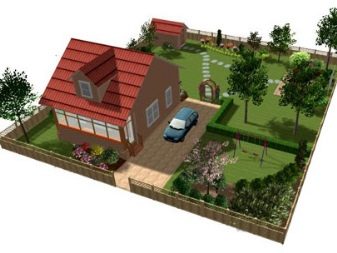
If the site has not yet been purchased, you can first decide on the project, and then look for a territory that meets all of its requirements.
Dimensions (edit)
The size of the cottage is determined by several factors: features of the site, financial capabilities, the number of family members who will live in the house, and their needs. The size of the house is determined by its entire area and individual rooms, as well as the height - the number of floors.
When deciding on the entire area of the house, in addition to the above factors, it is worth remembering the main thing - it should be convenient for all family members to live in the house. It is worth considering in advance what additional rooms may be needed over time, as soon as possible addition of tenants to the house or as the number of purchased items increases.
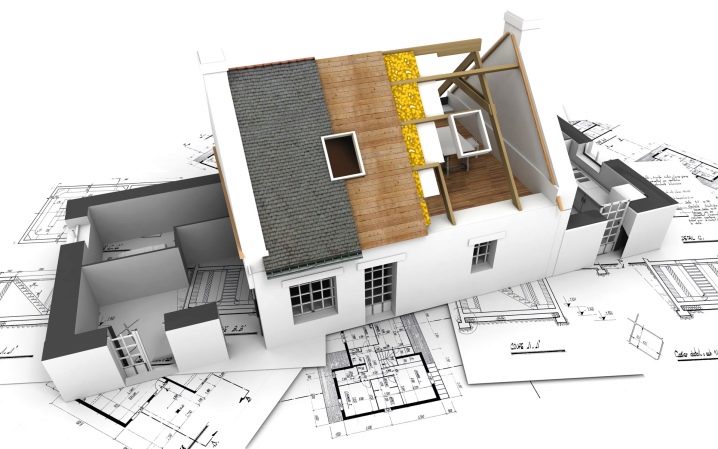
It should be borne in mind that usually 15% of the total area of the house is provided for storerooms, closets and stairs.
A one-story house is suitable for a small family and is usually built with few rooms. Otherwise, it will take up a lot of space on the site. The advantage of this layout is that all family members are close by, on the same floor. In addition, it is convenient to move around such a house, since there is no staircase.This is especially true for families with small children or the elderly.
The disadvantage of one-story houses is financial inefficiency. If it occupies a large area, it is more difficult to heat it than a two-story structure with the same number of rooms. The larger the house around the perimeter, the more materials will be required for the foundation and roof, therefore, during the construction phase, the work will take a lot of time and money.
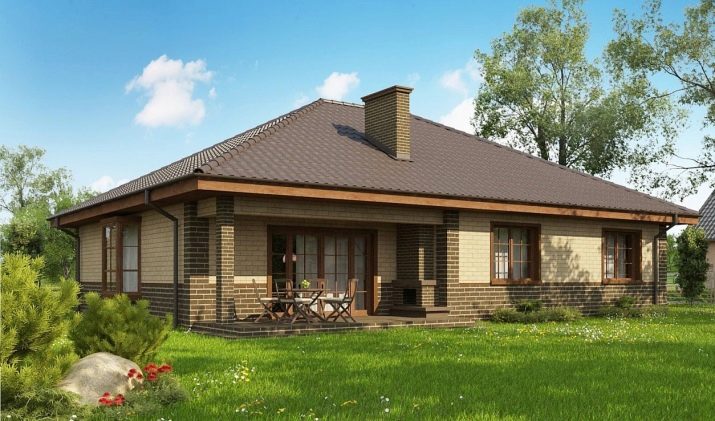

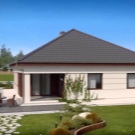
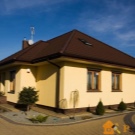
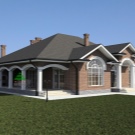
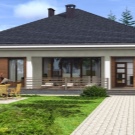
A one-storey house with an attic is classified as energy efficient and is a good option for small plots. However, in the process of living in such a house, some difficulties may arise: the inconvenience due to the triangular ceiling in the room, the wall is very low on four sides, additional insulation will be required for such a room, and during the construction process, difficulties may arise in carrying out communications.
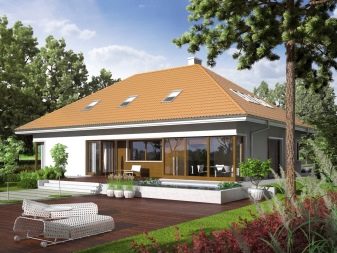

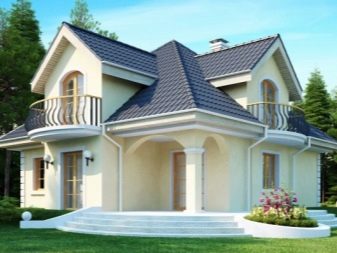
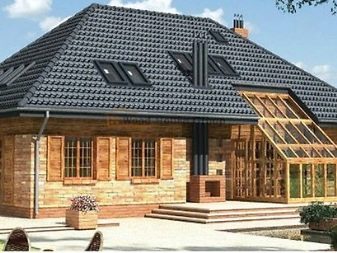
A one-storey house with an attic is the middle option between a one-storey cottage and a house with an attic. In such a house, the attic may not be used as a living space, but if necessary, be converted for this.
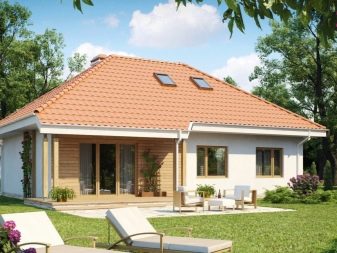
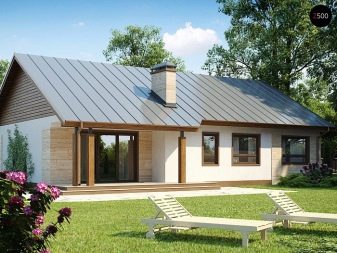
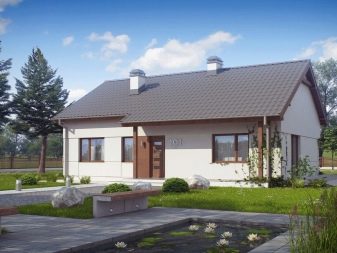

A two-story house differs from the option with an attic in the convenience of full use of the second floor without roof slopes, but it is less profitable - it will take much more money and time to build it.
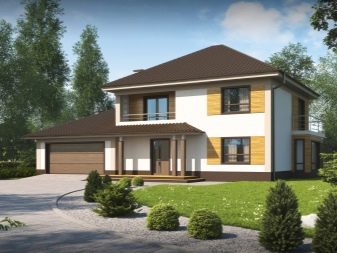
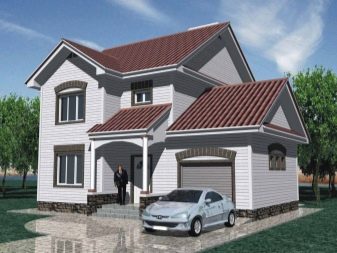
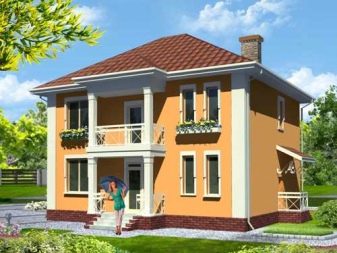
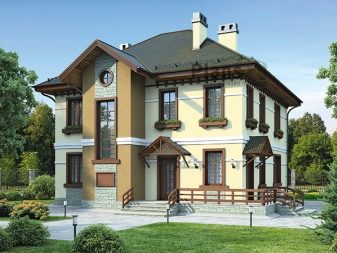
A house with a basement floor is not financially profitable. For its construction, it will be necessary to perform a large amount of work with the preparation of a land plot, the creation of a concrete box, communications, hydro and thermal insulation. A simpler and more profitable option is with a second floor or an attic.
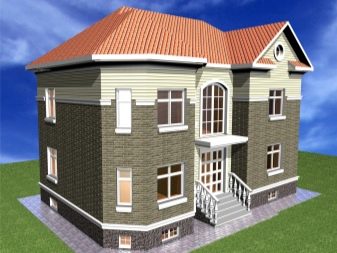
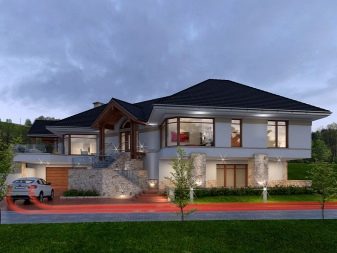
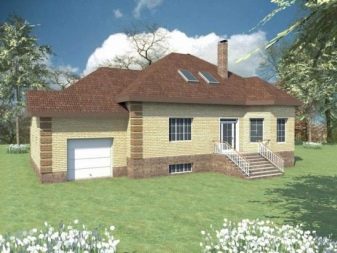
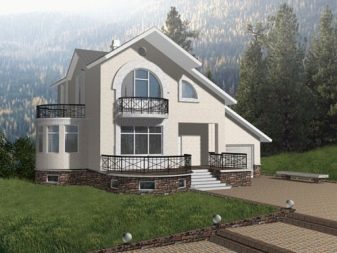
Internal layout
When planning the interior space, the arrangement of rooms, you first need to determine what shape the whole house will be. It can be square, rectangular or complex in shape.
The best option is a square shape. Both one-story and multi-story cottages can be made of this form. This shape allows you to make the house more economical when it comes to heating. In addition, the layout of the extended form allows you to create more comfortable living conditions.
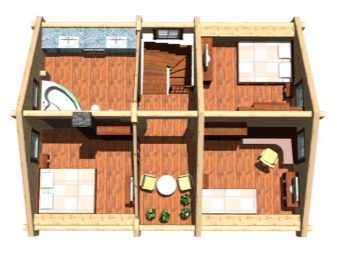
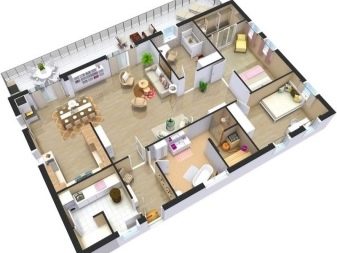
The rectangular shape is also considered a good choice. However, the closer this shape is to square, the better.
The layout of a complex shape is undoubtedly the most original and eye-catching version of the shape. However, in the process of building and living in such a house, some difficulties may arise. More materials for its construction will be required, financial costs increase. To bring such a project to life is somewhat more difficult than a standard one, it will take more time to build floors and a roof. In addition, a complex-shaped roof is not as strong as a conventional gable roof. It is more susceptible to leaks, which will entail additional expenses when eliminating them.
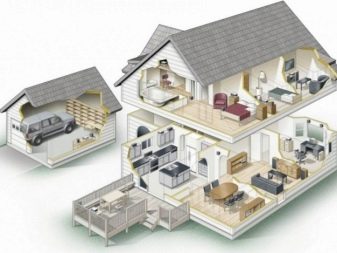
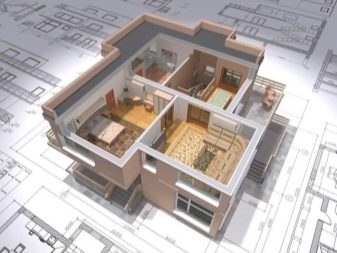
At the planning stage of the interior space, it is first of all important to decide on the height of the ceilings and the number of windows.
The ceiling should provide a comfortable stay for a person in the room. Too low a ceiling can oppress, "put pressure" on residents, and too high will require additional financial investments for the construction of higher walls, as well as for heating. The optimum height is considered to be a ceiling of 2.5-3 m.
There should be a sufficient number of windows in the house for reasons of economy - the more windows, the less electricity is required to illuminate the premises.
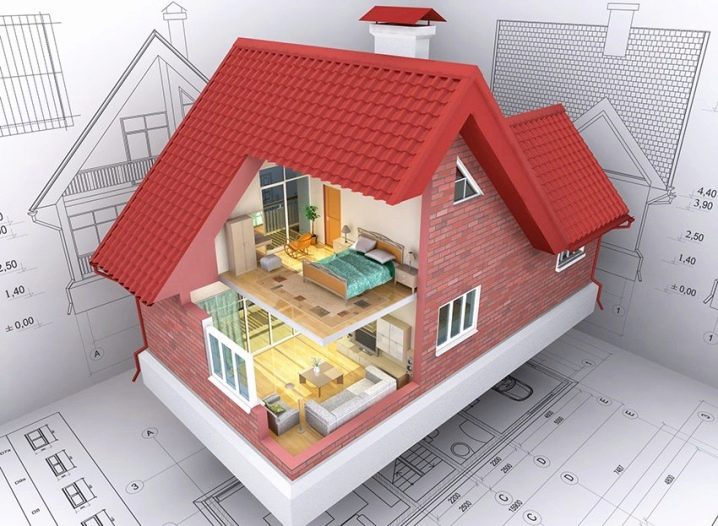
There are times when the project of the house is dictated by the site itself, for example, if it has an uneven surface. In this case, first of all, this problem is solved: either the plot is leveled, or a foundation of a complex shape is made, or a basement floor is being built. The last option is the most economical in case of uneven terrain.
In the case of uneven terrain, a one-story house is the best option. It is easier to plan, faster to build, and the safest.
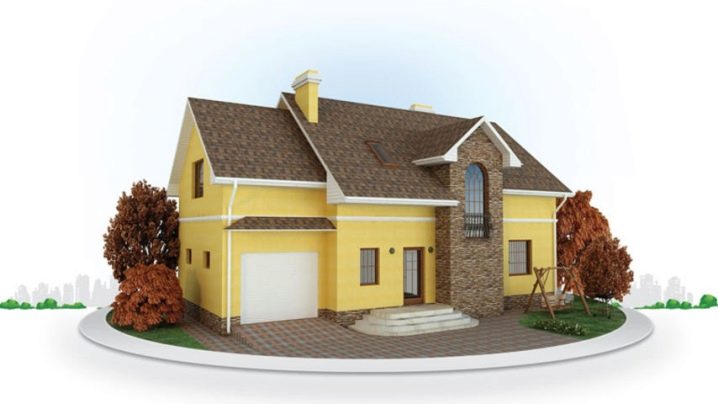
Architectural features of styles
Each house embodies a certain style.In accordance with this, when developing a project, a designer or an architect provides for certain features in it.
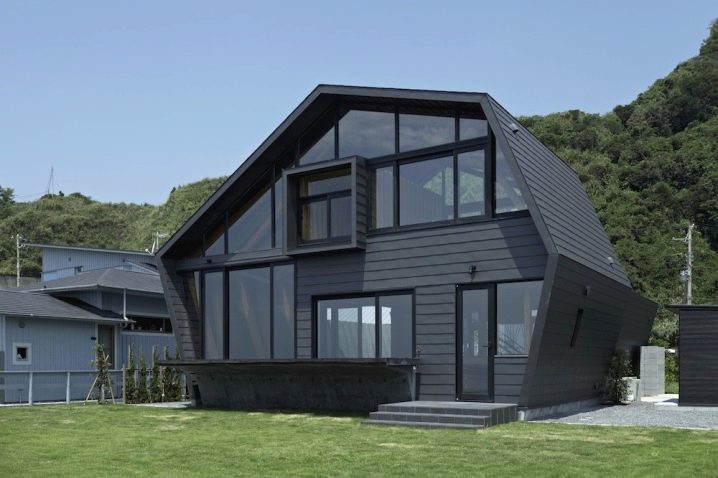
The American style is derived from the ancient European. It appeared as a result of the migration of Europeans to North America, where they began to build houses in accordance with their cultural and architectural characteristics. Their main desire, first of all, was to show the luxury of the house, so it often resembled a whole architectural complex.
The American style is characterized by spaciousness, symmetry of lines., cascading roofs, the presence of columns, many windows with shutters, large in size, the presence of spiers, a massive staircase leading to the central entrance, most often a one-story house occupying a large area, smooth walls without reliefs, plastering in light shades. A house in this style always "speaks" about the success of its inhabitants.
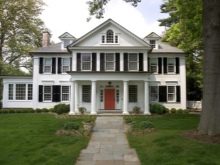

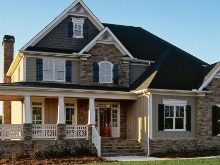
House in the style of F. L. Wright. The style (also called the prairie style) is named after the great architect - Frank Lloyd Wright.
It is distinguished by simple lines, mostly horizontal, a flat roof with high overhangs, windows forming horizontal lines, walls are minimally decorated, and a fireplace is located in the center of the house.
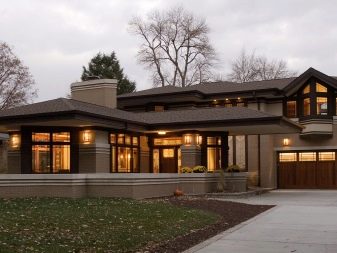
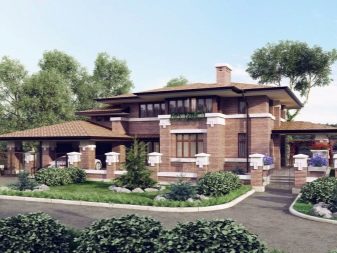
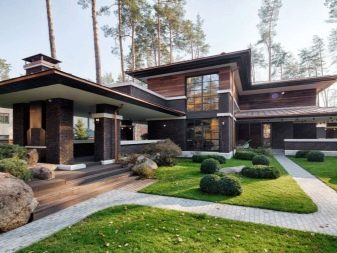
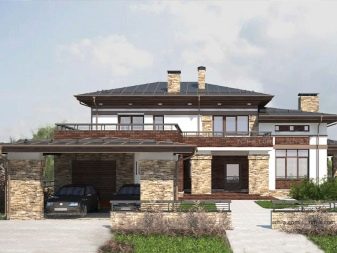
The house can have many glazed balconies and terraces. Thanks to this, it merges with the landscape.
The Gothic style appeared in the Middle Ages in Europe. In the beginning, it was used in the construction of churches and cathedrals. Its distinctive features: high elongated arches, the presence of columns and high towers, carved walls, narrow and high windows with multicolored stained-glass windows, vertical lines. The whole building tends upward.

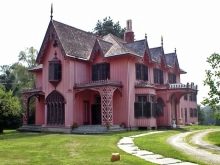
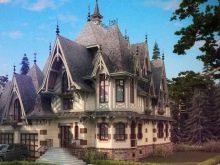
An Italian-style house presupposes, above all, quality. It is distinguished by its natural beauty, using natural materials. Wood can be combined with beautiful wrought iron elements. The facade is usually decorated with stucco, decorative plaster, mosaics. The roof is made flat, with a low slope.
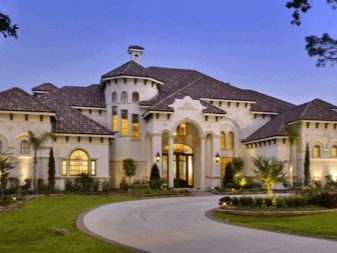

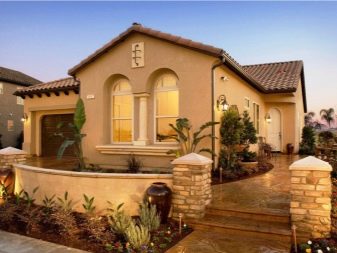
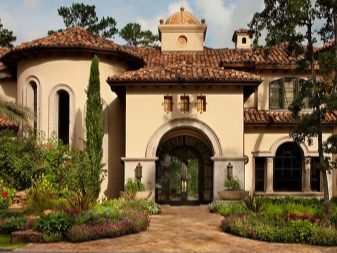
The minimalism style first appeared in the United States in the middle of the last century. Its main task is to free up space from all unnecessary things. Every detail is thought out to the smallest detail, multifunctional items are welcome. When building a cottage in the style of minimalism, everything should be laconic, compositionally built. For the construction, natural materials are used: marble, wood, stone, glass, and colors are chosen dim, monochromatic, preferably light. The facade is without any decorations, strict geometry can be traced everywhere.
This style is especially suitable for the construction of non-residential buildings - offices, shops. However, it is gaining more and more popularity among private country houses.
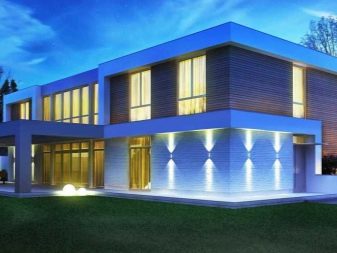
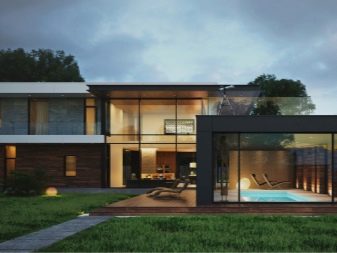
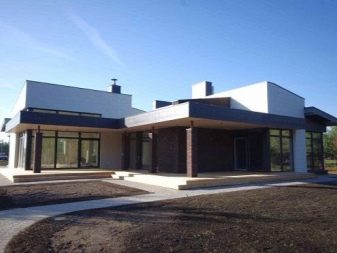
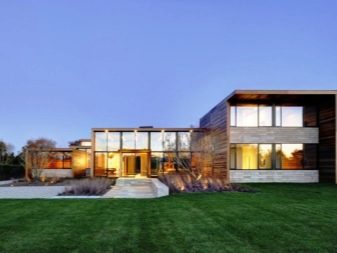
Modernity originated in Europe in the last century. It was created as a reflection of modern traditions, as a new style that carries the culture of its century. An innovation in architecture was the appearance of smooth lines, the rejection of symmetry. All corners are smoothed, entrance and window openings are rounded, forged metal gratings are used in combination with stained-glass windows and drawings.
The shape of the building is as close as possible to a square, all rooms are concentrated around the central part - the corridor.
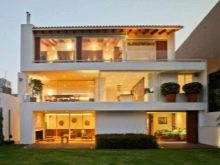
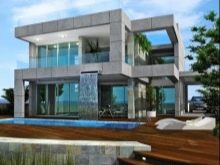
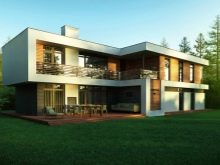
The exterior design of the house directly reflects the interior - what is inside is also outside.
Everything in the house matches the German style, including layout, materials and construction. Practicality, rationalism can be traced in everything. The whole house is close in shape to a square.
Such cottages are usually built one- or two-story, often there is an attic. All rooms are kept small, corridor space is kept to a minimum in order to save money. There may be small balconies and bay windows. The roof can be two- or four-pitched, red from tiles or metal. Windows, small in size, can be rectangular or arched with shutters. The frame is made of solid wood. Doors are also made of wood and painted in a contrasting color to the walls of the entire house.The foundation is finished with stone-like tiles.
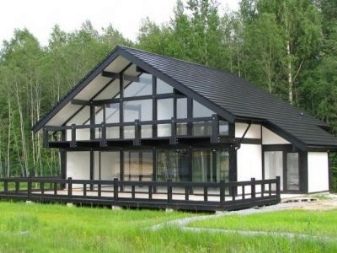
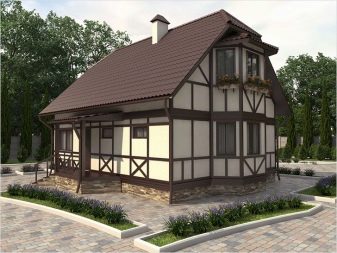
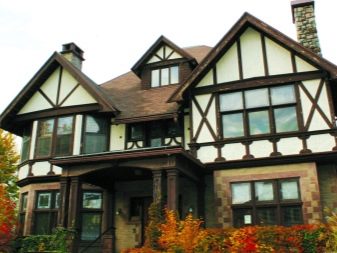
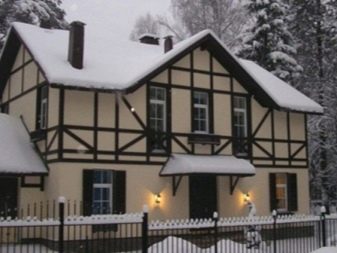
The Bavarian style house is a variation of the German style. The house is being built in a very restrained and symmetrical manner. However, they also have differences.
The internal space is planned to be free, spacious and comfortable for living. The area of the house is always planned to be extensive, occupying a fairly large space. The roofs are made sloping. The facade is finished with white plaster or half-timbered wood. The decor contains elements of contrasting color.
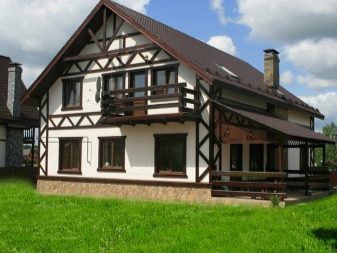
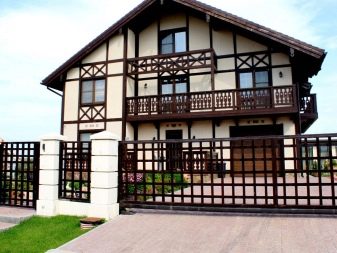
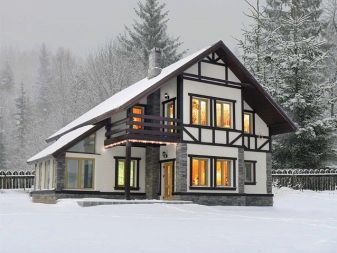
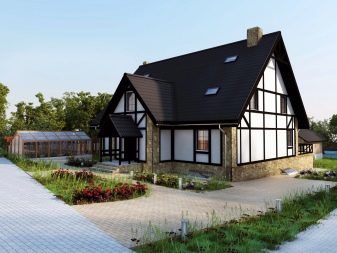
Japanese style implies minimalism in everything, simple shapes and lines, open space. The house is being built as close to nature as possible, mainly from wood. Particular attention is paid to the surrounding area - in the oriental style, there is always a rock garden, a decorative pond or mini-waterfall, dwarf trees. All conditions are created for a person to be close to nature, always have the opportunity to rest and think.
The roof is pitched. Wooden terraces with or without a roof can be located along the perimeter. Doors are made of wood or bamboo sliding doors, sometimes with glass. The interior space is freed from furniture as much as possible. Colors are chosen dull, calm, usually beige, white tones combined with contrasting chocolate and black.
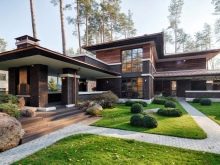

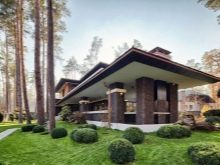
Recently, houses that are only externally stylized as Japanese have been popular, since a wooden building is very short-lived.
The Victorian house looks chic, resembling a palace. The name itself comes from the name of Queen Victoria, who in the 19th century laid the foundation for this trend in architecture.
The main features of this style are the bright, colorful colors of the walls and roof, which is made of tiles and has a complex shape, large narrow windows combined with panoramic ones, an abundance of decor on the facade, a terrace with columns and a large front entrance. Externally, the house can be finished with a wide variety of materials (brick, siding, plaster). Turrets, balconies and various projections can be added. The whole shape of the house is very complex, reminiscent of the gradual addition of its various parts to the base.
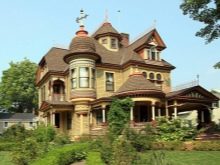
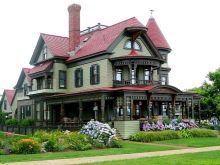
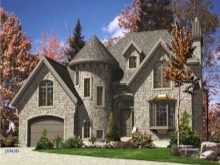
The interior layout is a multitude of rooms, varying in size and shape. Technical rooms, corridors and bathrooms are small in size. This also applies to bedrooms. However, the living room and dining room are made very spacious and bright.
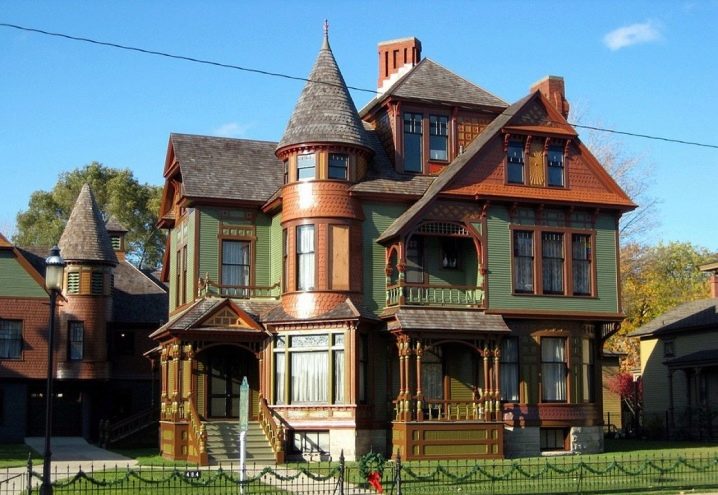
The house in the Baroque style belongs to the classical, one of its directions. The house outwardly always looks very rich and solemn, resembles a real palace. All elements of the cottage speak of the status of the owners and their luxurious life.
The house is always being built spacious, with many rooms and therefore is designed for a large number of residents. The facade is richly decorated with decorative elements with gilding, stucco, columns, sculptures, intricate domes and a magnificent grand staircase. The roof is usually metallic red or green. The walls are painted in light colors.

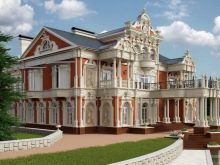
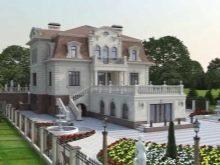
A Finnish-style house is usually built from logs, outwardly very similar to a traditional log house from Russia. The construction of such a structure is economically profitable, since inexpensive materials are used, and a small foundation is also being built (a tree does not require a massive support). Facades do not imply decor and look rather austere.
Usually it is one-story, sometimes an attic is added, as well as balconies and terraces. The house usually has a front and back entrance. As for the internal layout, most of it is occupied by the living room, most often combined with the kitchen.
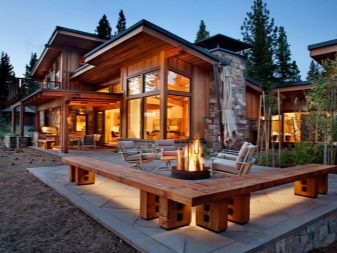
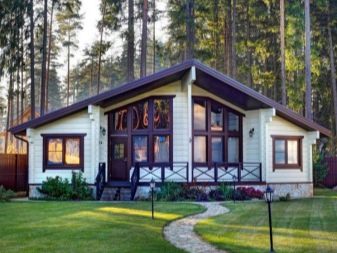
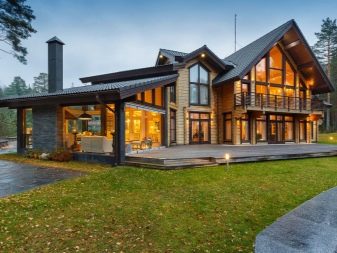
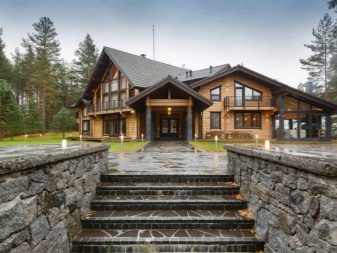
A lot of storage rooms are always planned in the house, as well as an indispensable attribute of Finland - a sauna.
House in the Canadian style. Historically, such buildings were made of untreated logs, so they looked as natural as possible, close to nature. In addition, the logs could be different in size to enhance the natural effect. The decor was not used at all, because.deliberately sloppy logs in themselves were of artistic value. The house looked very much like a Russian hut. The very principle of stacking logs came to Canada from Russia.
However, modern Canadian buildings represent a slightly different technology. Its main principle is to build a house as quickly and cheaply as possible.
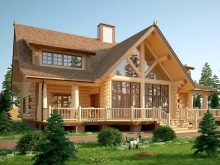

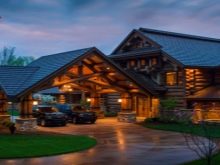
The structure of the house is a frame and OSB chipboards fixed on it, inside of which there is an adhesive layer of expanded polystyrene. Thanks to this, the house is protected from cold and drafts, which saves finances on heating the area.
Interesting design ideas
Private houses can be made in any style. The architectural diversity creates a field for imagination for designers, and allows the owners to make their home unique and inimitable.
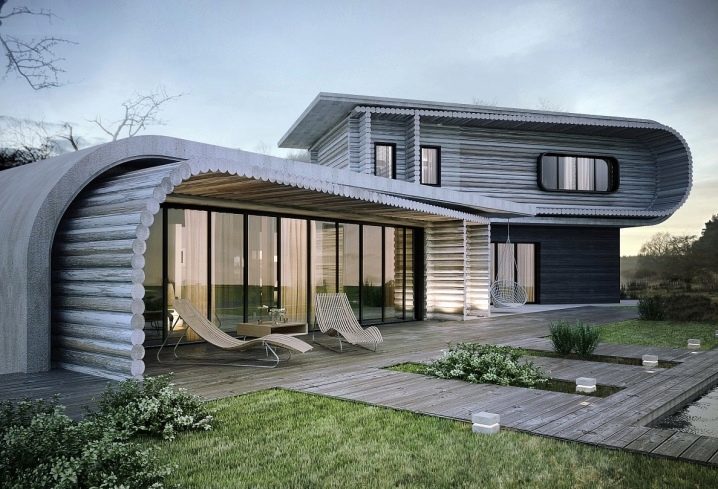
Below are photos with examples of the design of private houses in various styles.
Modern houses meet, first of all, the comfortable living conditions of people, they suggest a lot of light and free space.
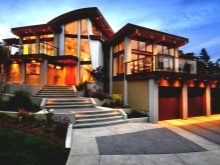


European-style cottages presuppose a well-thought-out design and arrangement of rooms, competent communications, simple design of facades.
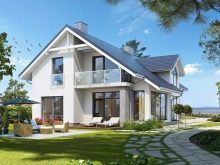
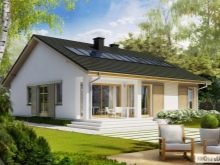
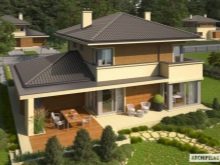
For residents of Russia and connoisseurs of origins, buildings resembling a Russian estate are suitable. This is necessarily a log cabin, which can be decorated with paintings, carvings and shutters on the windows.

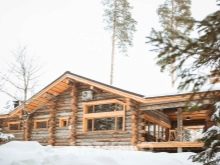
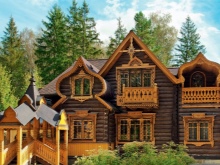
Lovers of medieval architecture will love the castle-like buildings with spacious rooms decorated with wood and stained-glass windows.
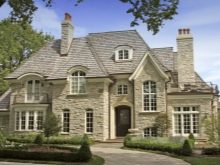
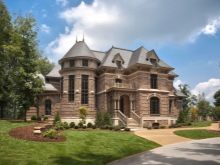
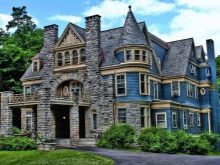
For original and creative people, colonial-style house designs may be interesting, which involves a mixture of several styles at once. Gothic elements can be combined with Indian style, Spanish-style houses can have baroque décor, and Chinese roofs can be mixed with French classics.
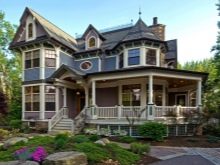
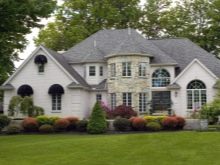

To complete the complete picture of the house, the interior design must also meet all the features of the chosen style. The photo shows examples of interior decoration in various styles.
Country-style interior (or rustic style) assumes a combination of colors from different countries, based on the use of natural materials: brick, wood, stone. Objects can be artificially aged to give the desired surroundings. The whole environment creates an atmosphere of comfort and warmth.
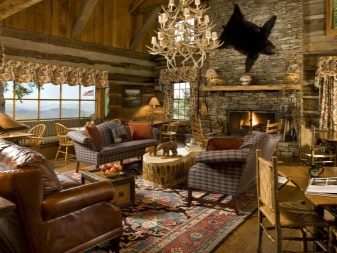
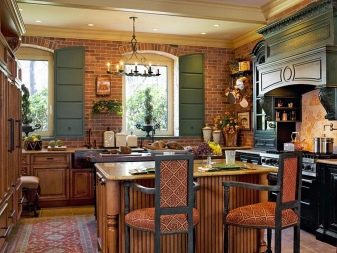
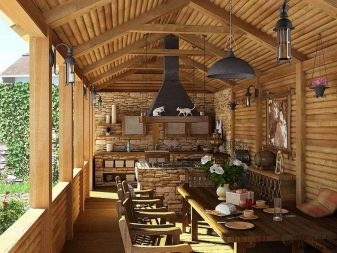

Alpine style is very close to country style, which also suggests rustic simplicity and naturalness of dwelling in the mountains. There must be a fireplace and animal skins in the living room, the interior is decorated with stone, wood and cast iron. The space is reminiscent of knightly times, while reflecting coarseness and comfort.
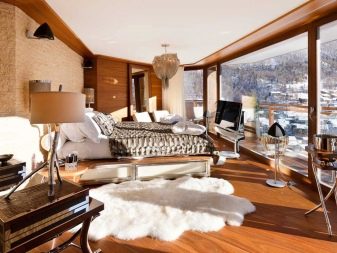
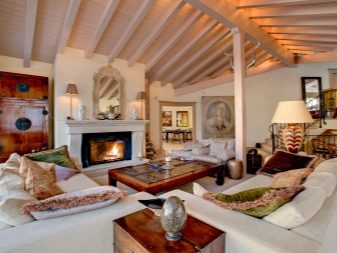
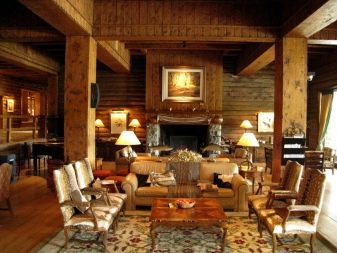

For those who love cleanliness, white color, spaciousness and the absence of unnecessary details and decor, the Swedish-style interior will be to their taste. All items are as simple as possible, pillows on sofas, small rugs are welcome, and photos or paintings on the walls in simple frames.
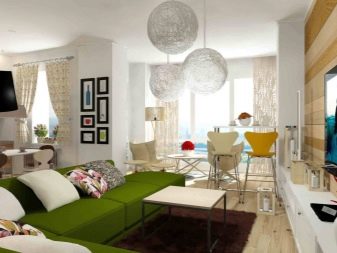
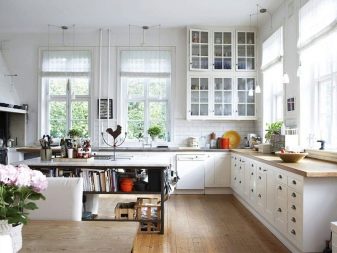
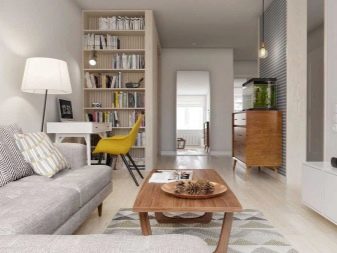
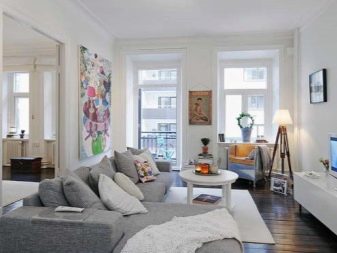
For lovers of simple luxury, a French-style interior is ideal. The colors in the decoration of the rooms are mainly light, powdery, without contrasting combinations, the furniture is mostly aged, with wrought iron legs and mosaics, a tea table in the middle of the living room, the presence of a fireplace and many decorative antique elements (candlesticks, paintings in gilded frames, mirrors) - all this characterizes French style.
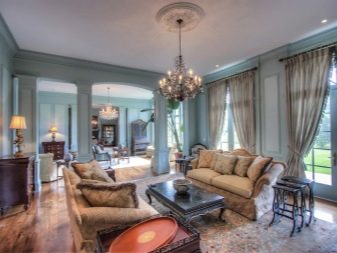
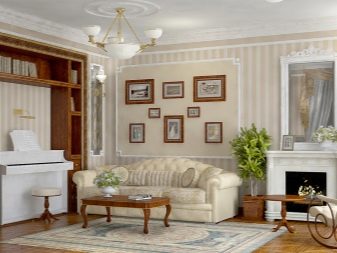
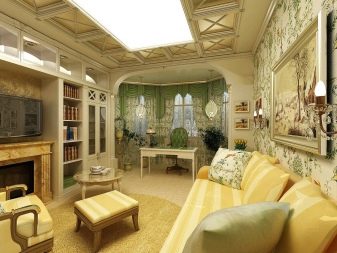
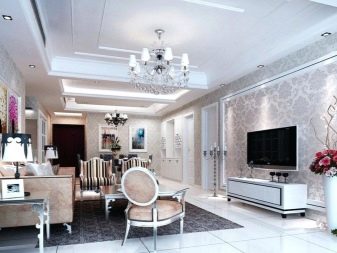
Fans of the orient and minimalism will love the Chinese-style interior. It is characterized by low furniture, cabinets hidden in the walls, the use of partitions instead of doors, a minimal selection of accessories, the use of wood, bamboo, and rice paper as materials.
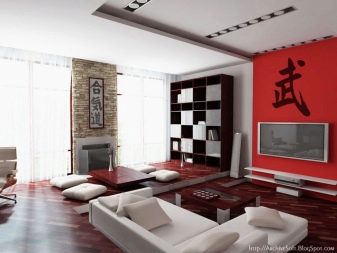
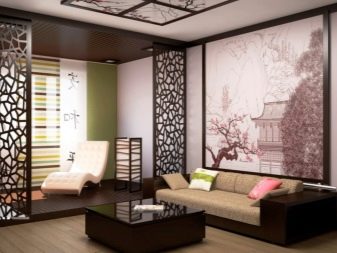
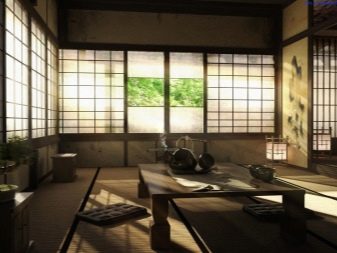
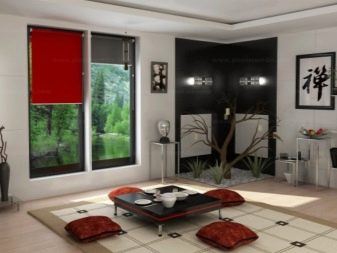
Lovers of luxury living and richly decorated stylish interiors will love the classicism style house. Everything should look expensive and solid. The best materials are used, for example, rare wood.Silk decorations, stucco moldings, gilded furniture, as well as sculptures and paintings in rich frames are welcome.
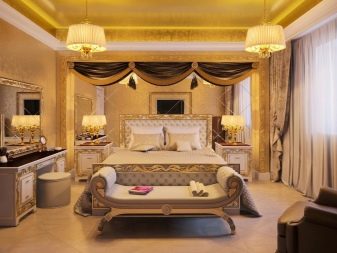
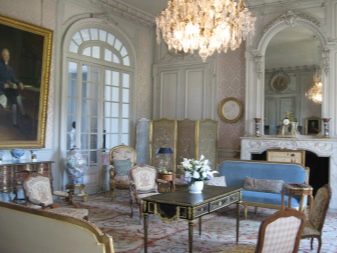
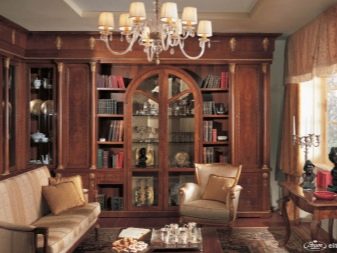
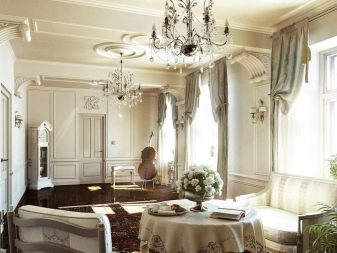
Very cozy and homely Dutch style. It combines the use of natural materials, as well as elements of the peculiarities of its country - a nautical theme in the decor, as well as floral motifs, especially tulips.
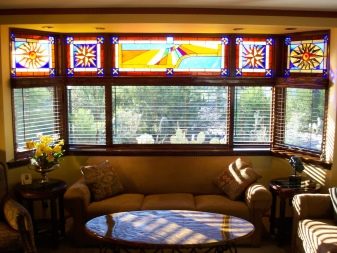

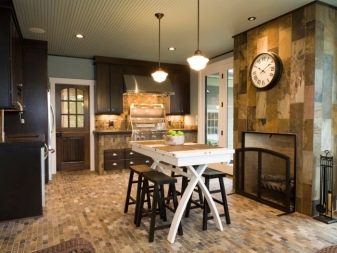
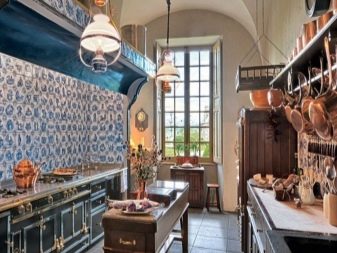
Eco-style is one of the latest fashion trends. Residents of megalopolises especially appreciate the cottages, which create unity with nature, maximum comfort and tranquility, a sense of purity and harmony. Everything in such a house should resemble wild nature, exclusively natural materials and shades are used.
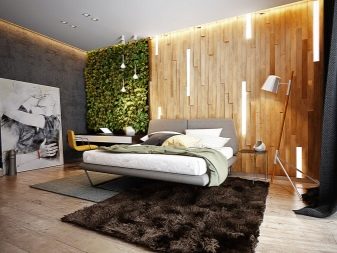
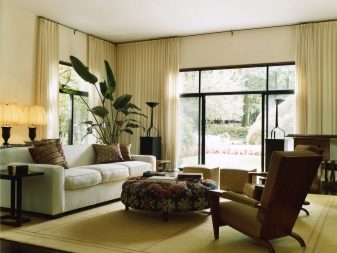
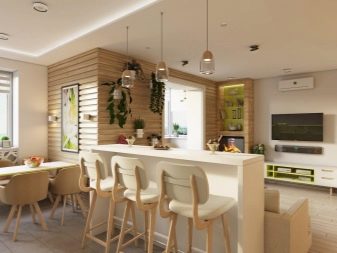

For the design and construction of a house in the "Provence" style, see the next video.













The comment was sent successfully.